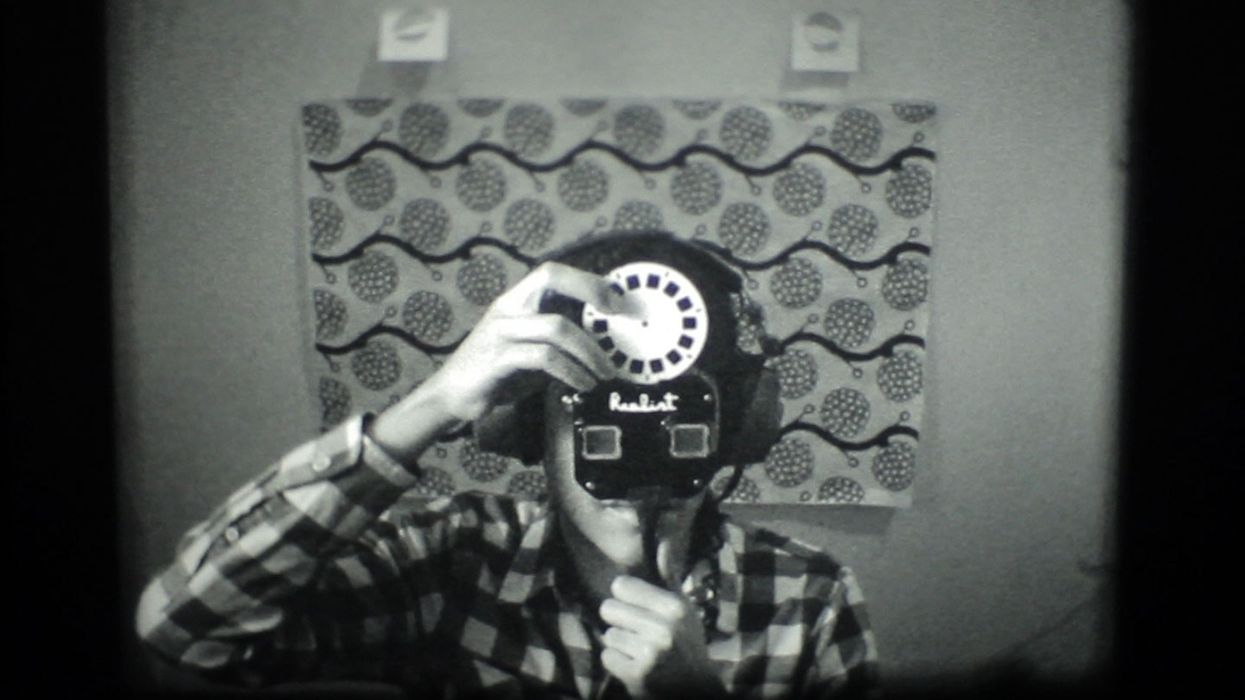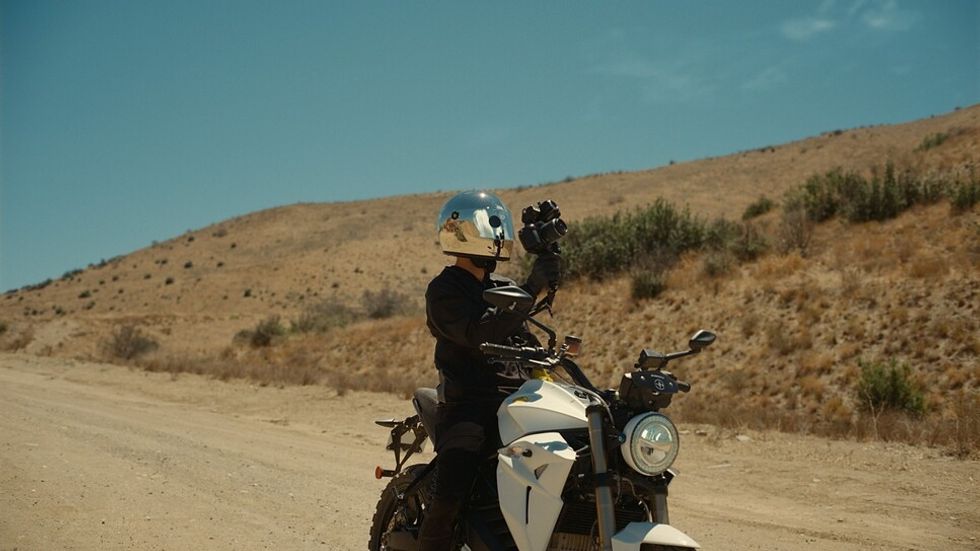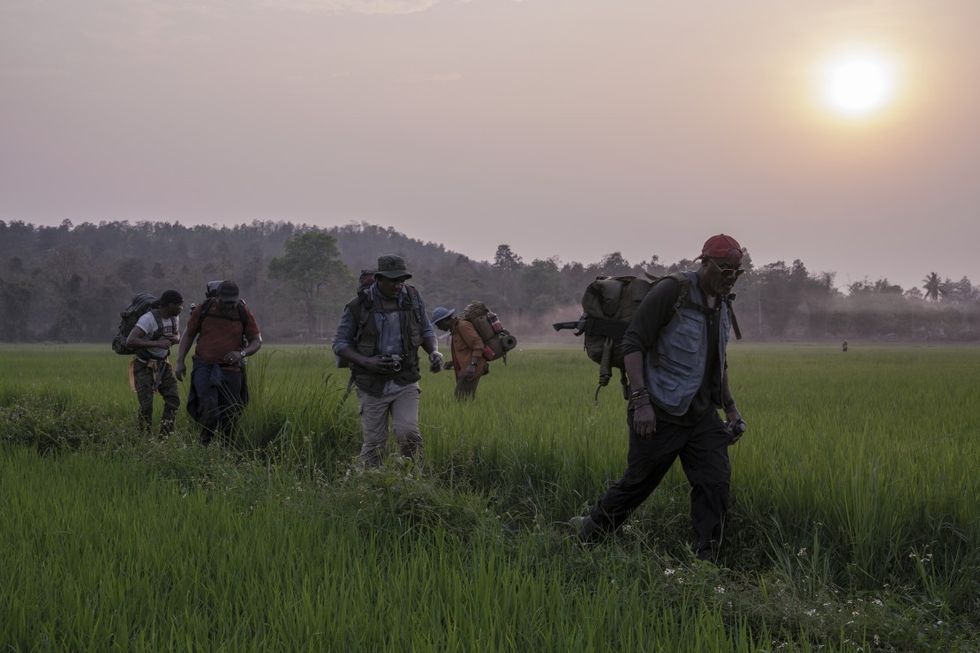3D is Old News. Cycloptics is the Future of Watching Movies

A short film can be just that: a short glimpse into a world of the filmmaker's creation. But then there are those short films that come with a medium-spanning world for audiences to explore far longer than the last frame of the film. One such successful transmedia project is Nathan Punwar's Loves of a Cyclops, where the viewer can enter a nonsensical world with enough supporting material (film strips, recordings, and photographs) to make you wonder if Cycloptics might just be possible. No Film School sat down with Punwar to talk about anything from the rewards of transmedia to how Pixar just might look into multidimensional cycloptic viewing.
Loves of a Cyclops is a short film that comes with an intricate world of transmedia components, like Cyclopticals Explained, recordings of a renegade psychologist, music from the Bonaventure Sessions, What Is Cycloptics? (A film strip for Children) and more. Before you read our interview with director Nathan Punwar, here is the short film for your viewing pleasure, or view it on the Loves of a Cyclops site where you can then dive in to the rest of the transmedia components!
NFS: How did you come up with the idea for your short film, Loves of a Cyclops?
Nathan Punwar: The concept began only with an image of a man with a lens for an eye. Initially I thought he might be animated in stop motion with photos, and everywhere he went, he would have a lens protruding from his face. But once I started writing, it became more about the idea of what it could mean to need a lens in order to see someone who can’t see what we see, so the lens helps to correct it. It evolved into this story about a mythical one-eyed man who sees other dimensions we can’t see, but he wants to find a way to interact with our limiting and confusing three dimensions. Then Dr. Bill Vernon and Lina Rae Pearson arrived, and Francis’ story took off.
NFS: On the site, there's a whole world of components that branch out from the short film – did you come up with the short film first and then these components, or was it all a part of an original concept?
NP: Every branch came from our motivation to make the film and explore the world of Francis as completely as possible. Since we created such a densely packed story, it was only natural that his world would extend outside of the film and expand the universe. Prologue to a Cyclops was actually made first, while I was still developing the story. We started filming a black and white silent film on Super 8 to be set to music, using two of the characters, Francis and Lina Rae. We imagined the film as being conceived by Francis himself, which is why it’s told across two screens at once. It’s his idea of what a two-eyed film must look like -- stereoscope as imagined by a cyclops.
So in Loves of a Cyclops, you can see clips of it as the film they make within the film. We even screened it on its own at festivals a few years ago, and the same actors, Johan Guzman and Kathleen Kyllo, play the characters in both films. I went through the Prologue reels after we made Loves, and I discovered a single shot of Spencer LaVallee, who plays Bill Vernon. His character didn’t exist yet, he was just helping out on set that day, but I cut that bit of footage of him into one of the extra videos on the site. You never know when that rollout is going to be a gem.
NFS: What do you think is the cool part about making this kind of transmedia project for audiences? Is this something that more filmmakers should be exploring?
NP: For this project, it felt right, because we were creating so many ideas from scratch to develop the sense of this complete world where all this nonsensical stuff makes sense. Each element adds to that feeling, and invites you inside, which is important for a film that’s creating it’s own sense of reality. It probably wouldn’t work to do this for every film, but for the right story it can draw strangers in, especially when your audience is online and not in a theater. It also gave us an opportunity to play with these odd characters in a first-person way that the film doesn’t allow because it keeps pushing the story into new territory. That said, I think it’s most interesting when the extra content raises more questions than it provides answers. It only provokes more curiosity about the film.
Because of the nature of making this film the way we did, it took nearly a year, so we had a lot of inbetween time to kick these fun ideas around. The site isn’t just an expansion of the story. It’s a document of our lives for that year. Not everything contributes directly to the story, but it does come from our time spent telling it. If you come away from this knowing how to dance The Bonaventure Shouffle, you know you’ve gone deep enough.
NFS: There’s a lot of very cool art and stop motion animation in the short -- how do you conceive and execute your stopmotion?
NP: We knew animation would be used to tell the childhood backstory, partly to add to the feeling of an elusive legend, and partly to preface the surreal animated visuals that tie into Francis’ vision later in the film. This one was a little different than any I’ve done before. I can’t draw well, so we approached the talented Elena Megalos to do the illustrations. She animates her own work by hand, and it’s great, but I didn’t feel like leaving that monumental task to her for this, because it involved so many layers.
I gave her my storyboards for each shot, and she returned with her illustrations as individual ready-made cutouts. She created different branches, legs and arms that could be interchanged and moved, which we animated by hand against a green matte. Finally we composited the elements backgrounds, objects, people in After Effects. So we still had the natural look of stop motion, which was important for the handmade quality of our story, but also had total control over the final composition, and we could blend layers of colors in ways that lent to the concept.
NFS: When people go to the site, what’s the best way for them to go through everything? Recommendations for viewers?
NP: I guess it probably helps to see the film first, but at the same time, every piece of the site introduces you to the world of the film, so you can start anywhere. That’s why the sections are referred to as “branches and routes,” not chapters. There are no spoilers or wrong ways, and in fact I’d be very curious to hear from people who stumble their way through the site before watching the short.
There’s so much information packed into the film, you can’t connect with everything the first time you see it. That may be a flaw, but we made it that way on purpose, because that’s how Francis feels, and the site follows the same disorder. There is no order to Francis’ view of the world, so there is no order to how you should see the world through his eyes. I’m never going to assume anyone is going to watch this film multiple times, much less once all the way through. But I want to make it as rewarding and rich as possible for those who venture inside.
NFS: There's an interactive component to the project as well, using Tumblr? What can we contribute?
NP: Part of the idea behind the story is finding your own vision and sharing it, so the Vision Collection Tumblr page is for that. We feature the work of artists we admire or work with, and each post is a “vision sighting” like the visions Francis creates and releases into the wild in Loves of a Cyclops. We’d like to see artists and creators of all kinds submit their own visionary work. It can be video, animation, photography, painting any type of unique vision. It doesn’t have to be related to the film, and anyone can submit work they find and admire as well.
The ultimate dream is for people to start tagging the “Francis symbol” in real life, wherever there might be any kind of vision sighting. Not that I’m encouraging vandalism, but if I see that symbol spray painted under an overpass someday, I’ll know I’ve made it as a storyteller.
NFS: Just for fun, how could a Cyclops see in stereoscopic?
NP: According to Dr. Bill Vernon, it’s definitely possible, but you’re not going to get anywhere with a piece of cardboard and some blue and red tinted plastic. You’re going to need some lasers, a small particle accelerator, some split prisms and electronics to start. But since a cyclops sees in a dimension we can’t see, stereoscopic cycloptic viewing is actually multidimensional way beyond 3D movies. Pixar might be interested in developing this commercially, but Dr. Vernon is currently in a patent dispute with Roland Bonaventure, so we may not see it for quite some time. Hopefully RealD will be out the window in a few years, and people will be ready to experience multidimensional Cycloptical film viewing in the theaters.
---
Thank you, Nathan!
If you're curious about the world Nathan has created, spend some time on the Loves of a Cyclops site.
What do you think of the world Nathan has created? Have you delved into a film with transmedia components, or is it something you would do in the future?
Link:


























